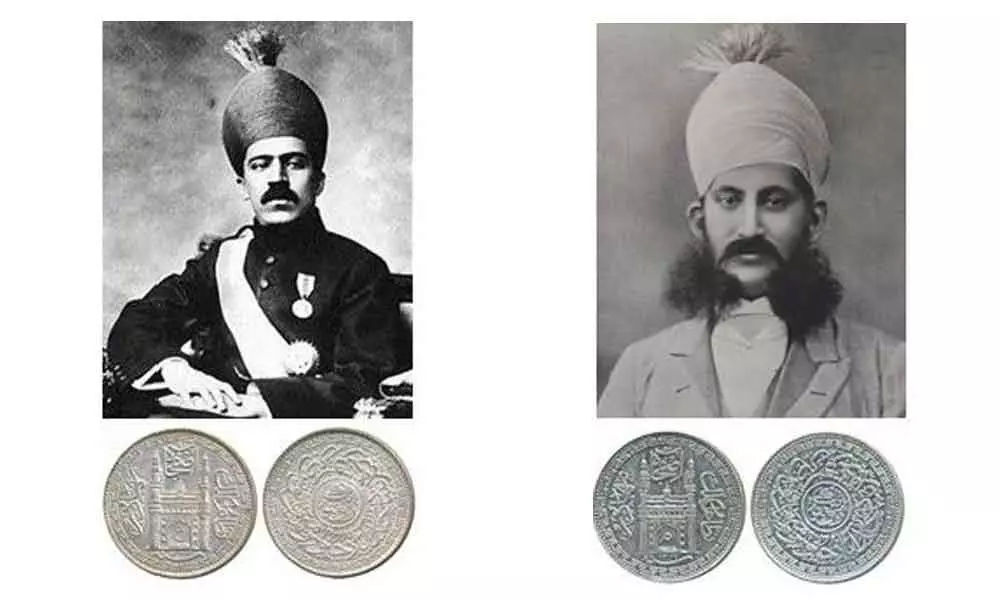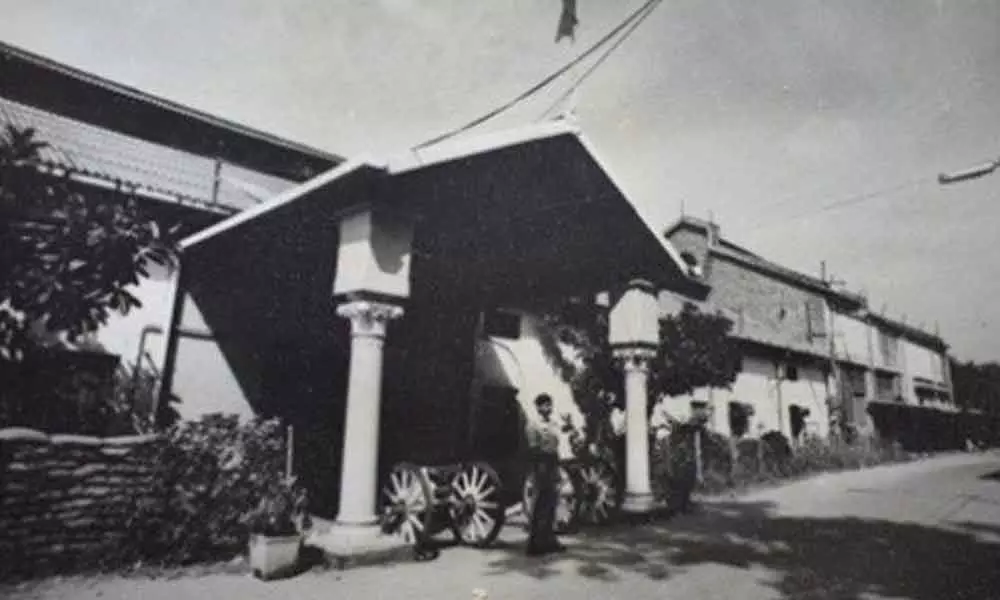Live
- Hackers target YouTube creators, send fake brand collaboration offers with malware
- North Korea reports South Korea's President Yoon impeachment 2 days after parliamentary vote
- Kerala announces Crime Branch probe into govt school question paper leaks
- Congress, BJP clash over Nehru's letters amid PMML controversy
- India's trend GDP growth to move closer to 6.5-7 pc in FY25: Crisil
- Shaina NC praises Omar as 'mature leader' for criticising Cong's objections to EVMs
- Handover Waqf scam case to CBI: Karnataka BJP chief to CM Siddaramaiah
- Maeil Dairies apologises over accidental mixing of cleaning solution in milk product
- Constitution debate in RS: Those who practice hate politics are lecturing us, says Kharge
- Congress amended Constitution to protect those in power: FM Sitharaman in RS
Just In
Hyderabad: IGMH celebrates foundation day today

Hyderabad: The Indian government Mint at Cherlapally, a unit under the Security Printing and Minting Corporation of India Limited (SPMCIL), Ministry of Finance, traces its history from the glorious heritage of Nizams. In 1803, the Nizam III, Nawab Sikandar Jah, gave orders for a Royal Mint, which was established at the Royal Palace at Sultan Shahi, Hyderabad.
Post the First War of Independence in 1857, except for mints of a few privileged states like Hyderabad, all mints in India were abolished. The British themselves had their own two government mints in Bombay and Calcutta at this point in time. Though the British Indian mints were issuing machine-minted coins, other princely states' mints were manufacturing handmade coins.
In 1893, the Royal Mint of Hyderabad was removed from Sultan Shahi to a special building set aside for the purpose in Dar-us-Shafa, where coins were still hand-made. This was during the reign of Nizam the VI, Mahaboob Ali Khan, and it grew with support of Mir Osman Ali Khan, the Nizam VII, who are considered to be founding fathers of this Mint.
The mint machinery was introduced in Hyderabad State in 1895. The first of machine minted coins are known as Charkhi coins (from Persian Charkh, which means a wheel) and denotes that the coins were machine made. In 1903 CE, the entire process of minting in Hyderabad State was overhauled on the lines of European Mints and the mint was now moved to Saifabad to start operations from 13-July 13, 1903 with latest machinery.
Hyderabad State was annexed to the Union of India in 1948. Consequent to the Federal Financial Integration in 1950, the mint was taken over formally by the Government of India. However, the minting of the coins in the name of the Nizam continued till mid-fifties, for continuity. Finally, this Mint came under SPMCIL on February 10, 2006, a corporation which has been a successful model for the PSUs as a Miniratna company.
With the growing need for coin minting capacity and, hence, greater real estate, the mint was moved once again at a cost of Rs 130 crore. From 1985 to 2000, orders for minting coins of India were given to 10 foreign mints: 3 in UK, 2 in South Korea, 1 each in Canada, Mexico, Slovakia, South Africa and Russia. However, with 'Make in India' now, no more coins are imported and IGM Hyderabad (IGMH) is in a position to export the same with latest security features.
In addition, IGMH is engaged in melting, refining and assaying of silver and gold to BS standards from various temples such as Tirumala Tirupati Devastanams, Shri Sai Sansthan Trust, Huligamma Temples, Sri Kalahasti Devastanam etc. IGMH assists the customs department in converting their seized gold into bullions. IGMH also manufactures commemorative coins for collectors, and they can be purchased from its sales counter at Saifabad campus, and through online from SPMCIL website. IGMH stands for the trust and purity assured for its precious metal products.
IGMH is currently minting the latest 2019 series visual challenged coins and will soon be releasing Rs 20 coins. IGMH rededicates itself on the foundation day to serve the nation with wider range of products and services with a modernised infrastructure.
WHAT IT ALSO DOES
IGMH is engaged in melting, refining and assaying of silver and gold to BS standards from various temples such as Tirumala Tirupati Devastanams, Shri Sai Sansthan Trust, Huligamma Temples, Sri Kalahasti Devastanam etc. IGMH assists the customs department in converting their seized gold into bullions. IGMH also manufactures commemorative coins for collectors
A TIMELINE OF FAMED PAST
• It was a royal mint of Hyderabad, and its history dates back to Nizams in 1803.
• Nizam the VI, Mahaboob Ali Khan, and Mir Osman Ali Khan, the Nizam VII, who are considered to be founding fathers of the Mint
• In 1893, the Royal Mint of Hyderabad was removed from Sultan Shahi to Dar-us-Shafa
• Till 1895, the mint was manufacturing handmade coins. Machinery introduced in this year
• The mint was moved to Saifabad to start operations from July 13, 1903 with latest machinery
• Though Hyderabad State annexed to the Union in 1948, minting of coins in the name of the Nizam continued till mid-fifties
• From 1985 to 2000, orders for minting coins of India were given to 10 foreign mints
• With emphasis on 'Make in India' now, coins are no more imported and IGM Hyderabad can even export with latest security features

© 2024 Hyderabad Media House Limited/The Hans India. All rights reserved. Powered by hocalwire.com









